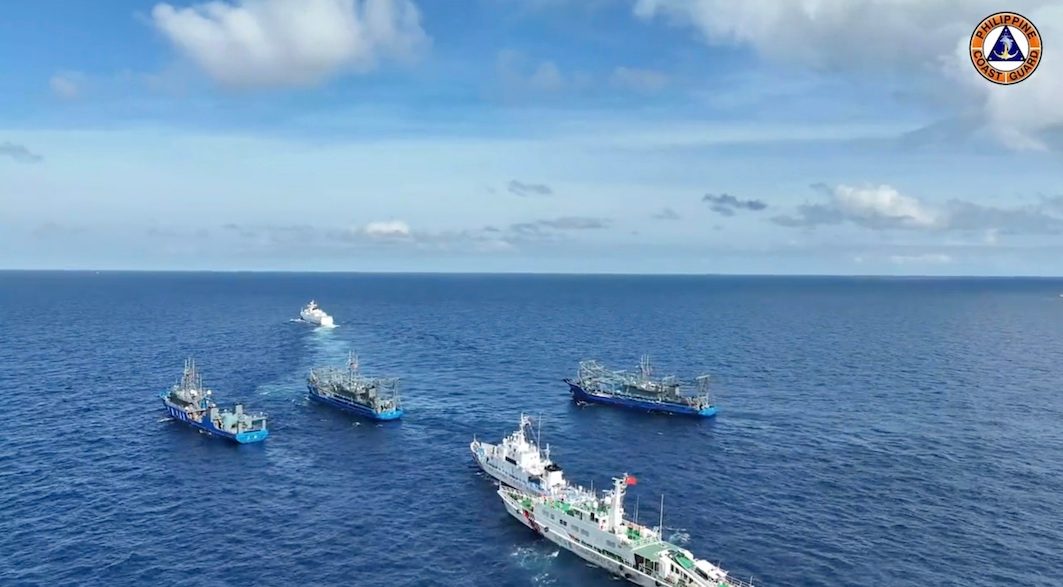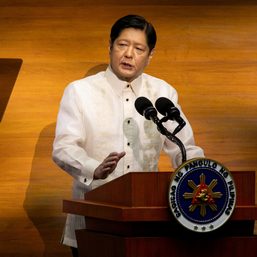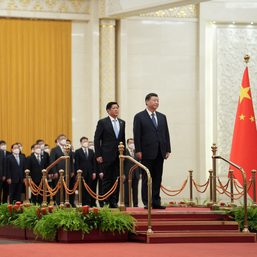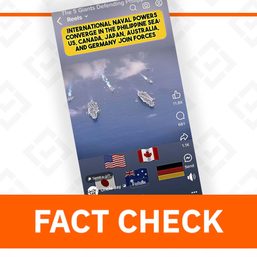SUMMARY
This is AI generated summarization, which may have errors. For context, always refer to the full article.

MANILA, Philippines – The Philippines is working on tweaking and updating its current “national strategy on the West Philippine Sea” amid rising tensions in the area.
“The current strategy now is working, but it’s just an improvement… it’s a whole of government approach to issues,” said Vice Admiral Alberto Carlos, commander of the Armed Forces of the Philippines (AFP) Western Command (WesCom) in a forum on Wednesday, September 27.
As chief of WesCom, Carlos’s area of operation includes Palawan, the Kalayaan Island Group, and the West Philippine Sea.
Carlos was speaking at the forum organized by think tank and consultancy group Stratbase ADR and co-presented by the Australian Embassy in the Philippines.
The WesCom, as Carlos describes it, is the “the frontliner in enforcing the 2016 Arbitral ruling,” which quashed China’s sweeping claim over almost all of the South China Sea, including parts that are within the Philippines’ exclusive economic zone (EEZ).
His command has witnessed the rising tensions in the West Philippine Sea, brought about by China’s assertion of its claims there through so-called “grey zone tactics.”
Grey zone tactics refer to acts of aggression that stop short of actual military action. They include harassing Philippine ships, using water cannons, and other “dangerous maneuvers.”
It was Carlos who first made public allegations that the marine ecosystem in Rozul Reef and Escoda Shoal appeared damaged following the presence of China ships in the area.
The Philippine Coast Guard (PCG), another agency that’s manning up against China’s aggressive actions, later confirmed through an underwater survey apparent damage to the coral reef in the area after Chinese military militia ships were spotted there.
External threats
In mid-August, the Philippines released its National Security Policy for 2023 to 2028, which put emphasis on external threats, including tensions in the West Philippine Sea, tensions in the Taiwan Strait and the Korean peninsula, and Russia’s war against Ukraine.
Another Navy officials, Commodore Roy Vincent Trinidad, deputy commander of the Philippine Fleet, said the country’s approach to tensions in the West Philippine Sea and China goes beyond just the military.
“The beauty right now is that we have the consciousness of the nation, that is, it is not only the military’s responsibility to take care of the West Philippine Sea,” said Trinidad in the same forum.
In early August, China was criticized by the Philippines and its key allies after the China Coast Guard used water cannons against Philippine ships en route to Ayungin Shoal for a resupply mission.
Then in late September, just weeks after the Philippines blamed China for apparent coral reef damage, the Philippine Coast Guard raised alarm after the China Coast Guard placed a 300-meter long floating barrier at the opening of Bajo de Masinloc or Panatag Shoal.
The shoal is an international commons, meaning small-scale fishing by fisherfolk from the Philippines, China, and Vietnam should be allowed access at all times since it’s their traditional fishing ground.
Manila removed the barrier a day after it announced its installation.
Raymond Powell or the Gordian Knot Center for National Security Innovation, praised Manila’s apparent strategy of exposing China’s tactics in the West Philippine Sea, which he called “assertive transparency.”
West Philippine Sea study
The Philippines’ National Security Council, which crafted the National Security Policy, is planning research expeditions to the West Philippine Sea, alongside Filipino scientists.
Australia’s acting ambassador Dr. Moya Collette said her country was open to working with the Philippines on restoring coral reefs anew, although no projects are in the works.
Canberra and Manila have worked on coral reef restoration projects in the past – in Pangasinan, Zambales, and Palawan.
The two countries recently upgraded their ties to a Strategic Partnership, during Prime Minister Anthony Albanese’s visit to Manila.
“Australia is concerned about destabilizing behavior that raises tensions in the South China Sea,” said Collette at the forum.
Philippine President Ferdinand Marcos Jr. has said that he wants joint drills between Manila and Canberra to continue.
Australia has said that it wants more joint patrols with its Philippine counterparts in the South China Sea. – Rappler.com
Add a comment
How does this make you feel?



![[Just Saying] SONA 2024: Some disturbing points](https://www.rappler.com/tachyon/2024/07/TL-marcos-sona-points-july-23-2024.jpg?resize=257%2C257&crop=335px%2C0px%2C720px%2C720px)













There are no comments yet. Add your comment to start the conversation.